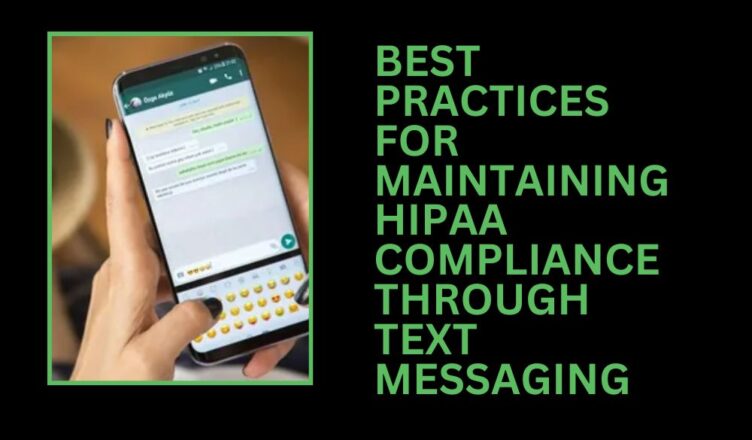Text messaging has become a critical communication tool in healthcare, providing a quick and efficient way to exchange information. However, with the convenience of text messages comes the responsibility of ensuring compliance with the Health Insurance Portability and Accountability Act (HIPAA). HIPAA sets the standard for protecting sensitive patient data, and any communication involving this information must comply with its guidelines. In this blog post, we’ll explore best practices for maintaining HIPAA compliance when using text messaging in a healthcare setting.
Understanding HIPAA Compliance for Text Messaging
HIPAA compliance involves more than just securing patient data—it requires a comprehensive approach that encompasses the technology used, the policies in place, and the behavior of healthcare staff. When it comes to text messaging, it’s essential to use platforms that are specifically designed to protect the privacy and security of patient information. Standard SMS text messaging services do not usually meet HIPAA requirements because they lack encryption and the ability to verify the recipient’s identity.
Choosing the right HIPAA-compliant text messaging app is the first step toward ensuring compliance. These apps are designed with security features such as end-to-end encryption, which means that messages are encoded from the moment they are sent until they are decrypted by the intended recipient. This prevents unauthorized access during transmission. Additionally, HIPAA-compliant messaging apps often include features like automatic log-off and password protection, further securing the information.
Note – Ready to enhance your healthcare communication securely? Explore our range of the Best HIPAA compliant text messaging app tailored to meet your needs. Click here to ensure your patient data remains protected and your practice stays compliant. Start safeguarding your communications today!
Implementing Policies and Training for HIPAA Compliance
Once you have the right tools in place, the next step is to establish clear policies that govern the use of text messaging for patient communication. These policies should clearly define what types of information can be sent via text and the procedures for doing so. It’s important that all healthcare staff who use text messaging are aware of these policies and understand their responsibilities under HIPAA.
Training is a critical component of maintaining HIPAA compliance. Healthcare providers must receive regular training on the proper use of text messaging, including how to handle and secure patient information. Training should also cover the consequences of HIPAA violations, which can include severe penalties and fines for both individuals and organizations. Regular updates and refresher courses are essential to keep everyone up-to-date on the latest regulations and technologies.
Monitoring and Auditing Text Message Compliance
To ensure ongoing compliance, healthcare organizations must actively monitor and audit the use of text messaging. This involves reviewing message logs to verify that all communications are compliant with HIPAA regulations. Monitoring should also check for unauthorized access or disclosure of patient information.
Auditing is another key practice. Regular audits help identify potential security breaches and ensure that all communication practices comply with HIPAA standards. Audits can also help organizations find areas for improvement in their communication practices, leading to better security and efficiency.
Encouraging Patient Participation in Secure Text Messaging
Involving patients in the secure text messaging process can also help maintain HIPAA compliance. Patients should be informed about how their information will be used and shared via text messaging, and they should give their consent before any communication begins. Educating patients about the benefits and risks of text messaging can empower them to make informed decisions about their health information.
Furthermore, providing patients with instructions on how to securely communicate with healthcare providers through text messaging enhances compliance. This includes guiding them on how to set up and use HIPAA-compliant messaging apps. By engaging patients in this way, healthcare providers can ensure that both parties are committed to maintaining the privacy and security of sensitive information.
Conclusion
Maintaining HIPAA compliance when using text messaging in healthcare is critical for protecting patient information. By choosing the right technology, implementing effective policies and training, conducting regular monitoring and audits, and involving patients in the communication process, healthcare organizations can ensure that their text messaging practices are secure and compliant. These best practices not only protect patient data but also build trust between healthcare providers and their patients, contributing to better overall care.
For more insightful articles related to this topic, feel free to visit worldforguest.com

